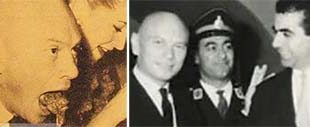he period between 1304 and 1320 (1925–1941) stands out as one of the most critical and transformative phases in Iran’s contemporary history. During these years, significant cultural and social changes were initiated to support and stabilize the political foundation of the newly established Pahlavi dynasty under Reza Shah. This era marked a deliberate and systematic effort to modernize the country and bring about a shift away from traditional structures that had long dominated Iranian society.
The Rise of the Pahlavi Dynasty
Reza Shah’s rise to power in 1304 marked the beginning of the Pahlavi dynasty and a new chapter in Iran’s history. His regime sought to centralize authority and create a unified, modern nation-state. To achieve this, he believed that traditional institutions, which were deeply rooted in religious and tribal practices, had to be dismantled or reformed. This approach extended to all aspects of Iranian society, including its cultural, social, and economic frameworks.
Cultural Transformation
Cultural transformation was a cornerstone of Reza Shah’s vision for modern Iran. This transformation involved the introduction of new institutions, practices, and policies that aimed to align the country with Western ideals of progress and modernization. A key feature of this cultural shift was the promotion of nationalism and the glorification of Iran’s pre-Islamic heritage, particularly the Achaemenid and Sassanid empires. By emphasizing these aspects of Iranian identity, the government sought to foster a sense of national pride and unity that transcended traditional loyalties to religion, tribes, or regions.
One of the most visible aspects of this cultural shift was the push for Western-style education. New schools were established to replace traditional religious institutions, and the curriculum emphasized science, technology, and secular subjects. The government also promoted literacy and education for women, challenging long-held societal norms. The opening of Tehran University in 1934 was a landmark event, symbolizing the state’s commitment to education and modernization.

